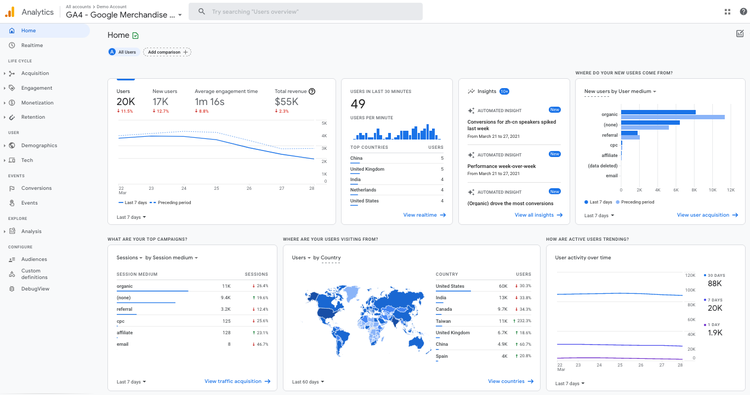Are you ready for Google Analytics 4?

As you may be aware
Google Analytics 4 is replacing Universal Analytics. On July 1, 2023, all standard Universal Analytics properties will stop processing new hits. 360 Universal Analytics properties will stop processing new hits on July 1, 2024. Russell Ketchum – Director of Product Management, Google Analytics stated: “All standard Universal Analytics properties will stop processing new hits on July 1, 2023. After that, you’ll be able to access your previously processed data in Universal Analytics for at least six months.”
In light of this impending deadline, the time to transition from Google Universal Analytics to Google Analytics 4 is now. Make It All Work is ready to help you. We have migrated many customers and identified some key information that you will want to have before jumping in with both feet.
Definite Differences
There are some definite differences between UA and GA4 that you will want to understand as you read your new reports. For example: In UA, you can only set one attribution model per view—but now, with GA4, you can have multiple attribution models running simultaneously and compare their results side-by-side to help you understand which campaigns are more successful at generating conversions.
GA4 has upgrades that are the result of changes in the device landscape. For example, GA 4 has an event-based measurement model that is not organized into independent segments like UA. This means it can track someone’s interaction when a customer visits your website from their phone, log in to their account on their laptop, and then buys something with an app later.
Universal Analytics tracks screen views in separate mobile-specific properties, whereas GA4 combines both web and app data in the same property. If you are tracking web and app data in your GA4 property, consider the additional app traffic when comparing page view metrics between the two. So, while the data model is changing, GA4 makes cross-device tracking easy (and the data points are more precise). UA counts only one conversion per session for the same goal. GA4 counts multiple conversions per session for the same conversion event.
Additionally, GA4 uses first-party cookies and signals to enable cross-device data collection and reporting. The primary data point in GA4 is a different kind of event. These GA4 events are much more granular and descriptive of the specific action that triggers them by default. Additionally, you don’t have to configure them.
GA4 makes it easier to follow a visitor’s journey without implementing Google Tag Manager. GA4 will connect all those interactions to see what happened when and where at each step! This helps to achieve more accurate analysis and insight into how your customers engage with content at each stage in their journey, and on what device!
We are here to help
Please keep in mind that once you migrate to GA 4, there are many differences between where you find data today in the UA reports and where it is now in GA4. Google also renamed a few features because they are Google. Our experience will help to make make your experience much better because we have rolled up our sleeves for a deep dive into GA4. We can help you through the process and provide the valuable knowledge needed to decipher the new ways of doing things in GA4.
Read More about Google Analytics 4 here!
If you would like to know more
- Call us at 212.675.4957
- Email us at hello@makeitallwork.com
- or fill out the form below

 ALL BLOGS
ALL BLOGS


